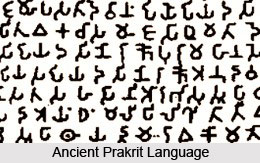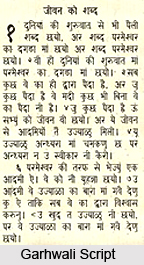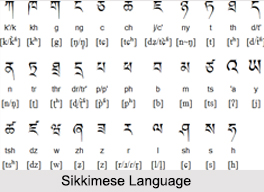 Khasi language, a popular Indian tribal language, belongs to the Austro-Asiatic tribal language family and is spoken mainly by the tribal people of the state of Meghalaya. This language is a part of the Khasi-Khmuic group of languages. Khasi language is vaguely connected with the Munda branch of the Austro-Asiatic group of languages that is mainly found in east-central region of India. In the country, most of the speakers of the Khasi language are found in the state of Meghalaya. However, this language is also spoken by huge number of people of the hill districts of the state of Assam. Sizeable speakers of Khasi language are found in the neighbouring country of Bangladesh. Khasi language is tremendously rich in legends and folk stories. Interestingly, this language had no script of its own in the past.
Khasi language, a popular Indian tribal language, belongs to the Austro-Asiatic tribal language family and is spoken mainly by the tribal people of the state of Meghalaya. This language is a part of the Khasi-Khmuic group of languages. Khasi language is vaguely connected with the Munda branch of the Austro-Asiatic group of languages that is mainly found in east-central region of India. In the country, most of the speakers of the Khasi language are found in the state of Meghalaya. However, this language is also spoken by huge number of people of the hill districts of the state of Assam. Sizeable speakers of Khasi language are found in the neighbouring country of Bangladesh. Khasi language is tremendously rich in legends and folk stories. Interestingly, this language had no script of its own in the past.
Khasi is a member of Mon-Khmer branch of Austro-Asiatic family. It is spoken mainly in the state of Meghalaya by around six lakh speakers. Khasi has many dialects. Some of these dialects display interesting divergences in the aspect of Word Order. The main dialects (among others) of Khasi are: Standard Khasi, Bhoi-Jirang, Langrin, Nongtung, Lyngngam and War.
The word orders in the main dialects of Khasi language are as follows -
The Standard Khasi has an SV0 order. This order displays an interesting aspect of agreement. It is between the subject and the verb (predicate) of the same clause. Having SVO order means that the subject occurs first in a sentence. However the agreement markers occur preceding the nouns. When there is a pronoun as the subject, these agreement markers themselves function as personal pronouns. In a possessive construction, the genitive maker follows the head noun. In the verbal complex, the correlative agreement marker occurs at the extreme left of it. The `Object` occurs after the verbal complex in a prepositional structure (This is true of all the dialects). So, the prepositions precede the nouns. The Langrin Khasi is mostly spoken in West Khasi hills, in Mawkyrwat block on the whole also follows the SVO order but with little differences.
Bhoi and Jirang dialects of Khasi language are mostly spoken in the East Khasi hills in Nongpoh block. This dialect also behaves similarly to a large extent, though there are some differences between this dialect and the other dialects of Khasi language. The word order in this variety is intriguing and complex as well as inconclusive, due to the limited data. Nongtung is mainly spoken in East Khasi hills- in Umsning block. In this dialect, if an object is not present, but has a subject which could be either a pronoun or a noun, then the word order is VS. If an object is present then the order could be either VOS/VSO.
To conclude, it can be said that the various dialects of Khasi language, namely standard Khasi, Langrin, Bhoi, Nongtung and Lyngngam show the extent of diversity found amongst them mainly from the word order point of view. Among the five varieties, standard Khasi, Langrin and Lyngngam are similar whereas Bhoi and Nongtung are very different. Lyngngam though is similar to the first, is quite different in various other aspects.



















